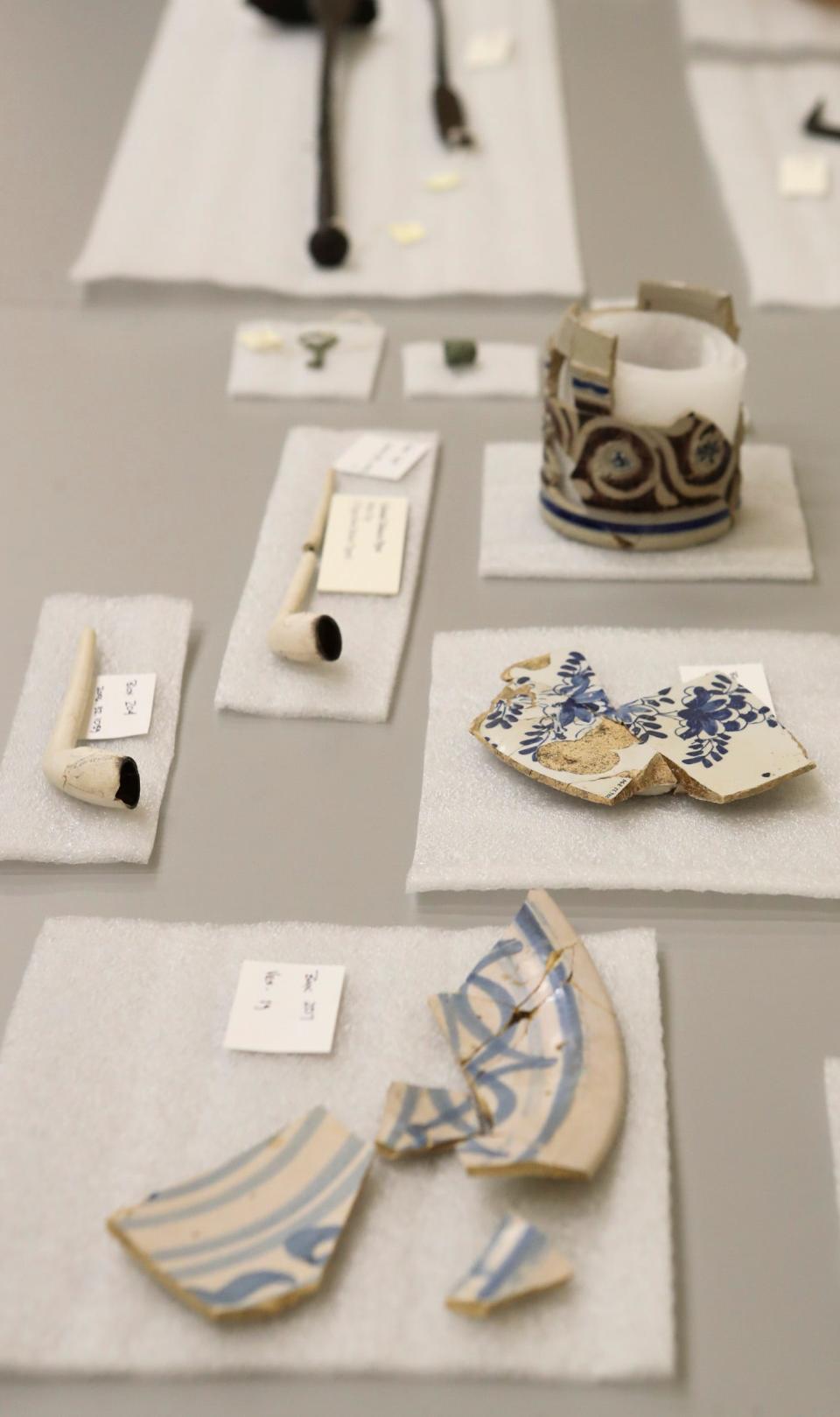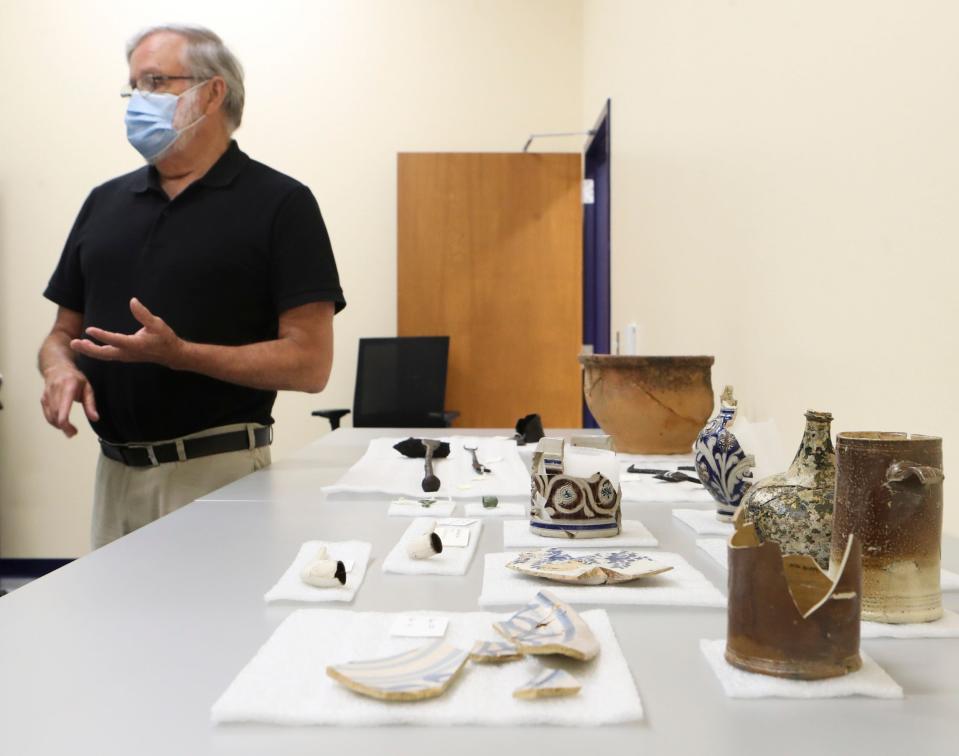Rewriting colonial history: DNA from Delaware graves tells unexpected story of pioneer life
In the 17th century, life along what would become the Delaware coast included European families working alongside enslaved Africans to farm the land and survive a rugged pioneer life.
The recent discovery and research of a pre-colonial burial site near Rehoboth Beach is rewriting Delaware and early American history, painting a more culturally diverse and complex society than previously assumed.
About 10 years ago, archaeologists discovered a burial site with 11 skeletons of European and African descent at Avery's Rest, an area near today's Rehoboth Beach Yacht and Country Club.
Experts at the Smithsonian National Museum of Natural History have been researching DNA from the bones and this summer published a report showing proof of the widespread nature of the slave trade and abysmal working conditions of colonial Delaware.
Anthropological geneticist Raquel Fleskes oversaw the DNA analysis project, the results of which were published this summer in the science journal Current Biology showing that men, women and children, from both Europe and Africa, toiled together closer than earlier believed.
Of the 11 bodies found within the remains, three were of African descent; two grown men and a child, all likely enslaved dating back to the late 1600s. New evidence shows that one of the African individuals was the father of the African child. That makes this site the earliest identification of kinship between individuals of African descent in North American colonial times.
"For African individuals, oftentimes we see a lot of separation of biological family in the process of enslavement," said Fleskes, and post-doc fellow at the University of Connecticut. "But in this case, we see a father and son buried together. That helps us rethink about what relationships were like then."
'Failed promises': Black Californians may soon get reparations. What would they be owed?
The report also showed that the struggles were shared among families and communities who likely worked together closely.
The graves of the European individuals also showed biological connections. Included in the eight other graves were a grandmother, mother and child, all of whom showed the same signs of performing strenuous labor to a greater extent than previously thought by experts.
"[Avery's Rest] places the lives of people of African descent, the lives of children and of women as main players in this narrative of early colonial Delaware," said Anthropological geneticist Raquel Fleskes. "A lot of times, it's the white male migration that is focused on during this time period. This time we're using DNA to really focus on narratives of family and kinship and learning how important those were to survive and live in the frontier region."
Unearthed Delaware mysteries
Aside from the general knowledge historians have about this period in history, certain details about colonial Delaware life are still limited due to the scarcity of archaeological sites in the state. That goes especially for the lives of Africans in the frontier, who are estimated to have made up around only 5% of the population in 1700.
Few sites have been unearthed in the Chesapeake region from this time period, and even fewer have yielded preserved human skeletons. That changed around 10 years ago when project director Dan Griffith and his team of archaeologists further investigated Avery's Rest.
The area just northwest of Rehoboth Bay has been recognized as a historical site since the 1970s. Years of fieldwork and surveying led to the discoveries of wells, animal carcasses and ceramics that alone took years to investigate. Around 2014, the discovery of a fence line is what drove the team to search for a house it may have been attached to.
What they did not expect to find, according to Griffith, was human burials – let alone 11 of them, who are estimated to have been buried between 1665 and 1695.
The discovery piqued the interest of archaeology experts at the Smithsonian, who began to invest in DNA and comparative analysis in hopes of learning more about the origins of settlers in Delaware land at that time, especially given how many different parties were vying over the land.
The rich history of Avery's Rest

In the late 1600s and early 1700s, land that would one day become the state of Delaware was considered a frontier. The area was simultaneously claimed by Maryland and the colony of Pennsylvania/New York, which led to confusion over tax payments among landowners.
At the same time, the trans-Atlantic slave trade was in full swing, British and Dutch colonists were fighting over the territory, indigenous populations were being run out of the land and independent settlers relied on emerging crops like tobacco to climb up economic ranks. Disease and death ran rampant and working conditions were abysmal.
Northwest of the Rehoboth Bay, John Avery and his family farmed tobacco from roughly 1675 to 1725 at what became known as Avery's Rest. According to historians, Avery was known as a foul-mouthed, boisterous drunk who served as a member of the court in Lewes, known then as the town of Whorekill.
What was that called? US changes names of nearly 650 places with racist Native American women term
The Averys harvested corn, wheat and tobacco while raising livestock like cows and pigs and growing what is believed to be some of the first imported peach trees in colonial America.
Rethinking Delaware history

The findings at Avery's Rest have reshaped previous assumptions about labor in colonial times, especially in terms of who was performing the strenuous work and how closely different classes of people worked together.
Another significant observation in Avery's Rest was the orientation in which the graves were buried. The European and African individuals were buried in the same burial ground, separated by only 15 to 20 feet. According to Fleskes' report, the relative closeness of the burials indicates a lesser degree of racial separation at the time, albeit not by much.
"Obviously, it was a segregated environment," Griffith said. "But they were closely buried, which means they were probably working closely together in life as well."
At the time, Delaware did not have a direct connection to the trans-Atlantic slave trade. The fact that three African individuals were found on the site is hugely indicative of the early origins of the slave trade in colonial America.
Lingering questions remain
Uncovering more details about who these individuals were and from where they came is the next priority for the Avery's Rest team, and the implications for understanding African American and colonial history in Delaware could be hugely significant.
DNA analysis has been able to pinpoint that the European individuals came from areas in northwest Europe. The genetic roots of the African individuals were harder to pin down but showed potential ancestral roots in West and Central Africa.
The team has also been able to narrow down the burial's age to a range of around 30 years between the late 1600s and early 1700s, but finding the exact years has been a challenge.
Concluding whether the European individuals are related to the Avery family or not is also a priority. So far, results do not provide conclusive proof, but ancestral records indicate that it is likely one of the individuals was related to John Avery's grandson.
But some questions may never be fully addressed.
"There were so few archaeological sites of that period that have been investigated in Delaware," Griffith said. "In part, because so many of them have been destroyed by sprawling development."
It's been confirmed that there are sites on both sides of Avery's Rest that give insight into this period of history, but they have since been developed over. The race to develop land forces archaeologists to prioritize "at risk" areas before they are destroyed, which can cause some projects to be put on hold or go unfinished.
According to Fleskes, the next steps in the project include conducting community engagement initiatives to dig up some archival records and continue digging into who these individuals were, where they came from and how they interacted with each other.
"This time we're really focusing on these narratives of family and kinship, and knowing how important those were to survive and live in the Delaware frontier region," Fleskes said. "It's amazing that DNA can visualize these stories."
Contact Molly McVety at mmcvety@delawareonline.com. Follow her on X, formerly Twitter, @mollymcvety.
This article originally appeared on Delaware News Journal: DNA discoveries in Delaware gravesite may reshape colonial history

